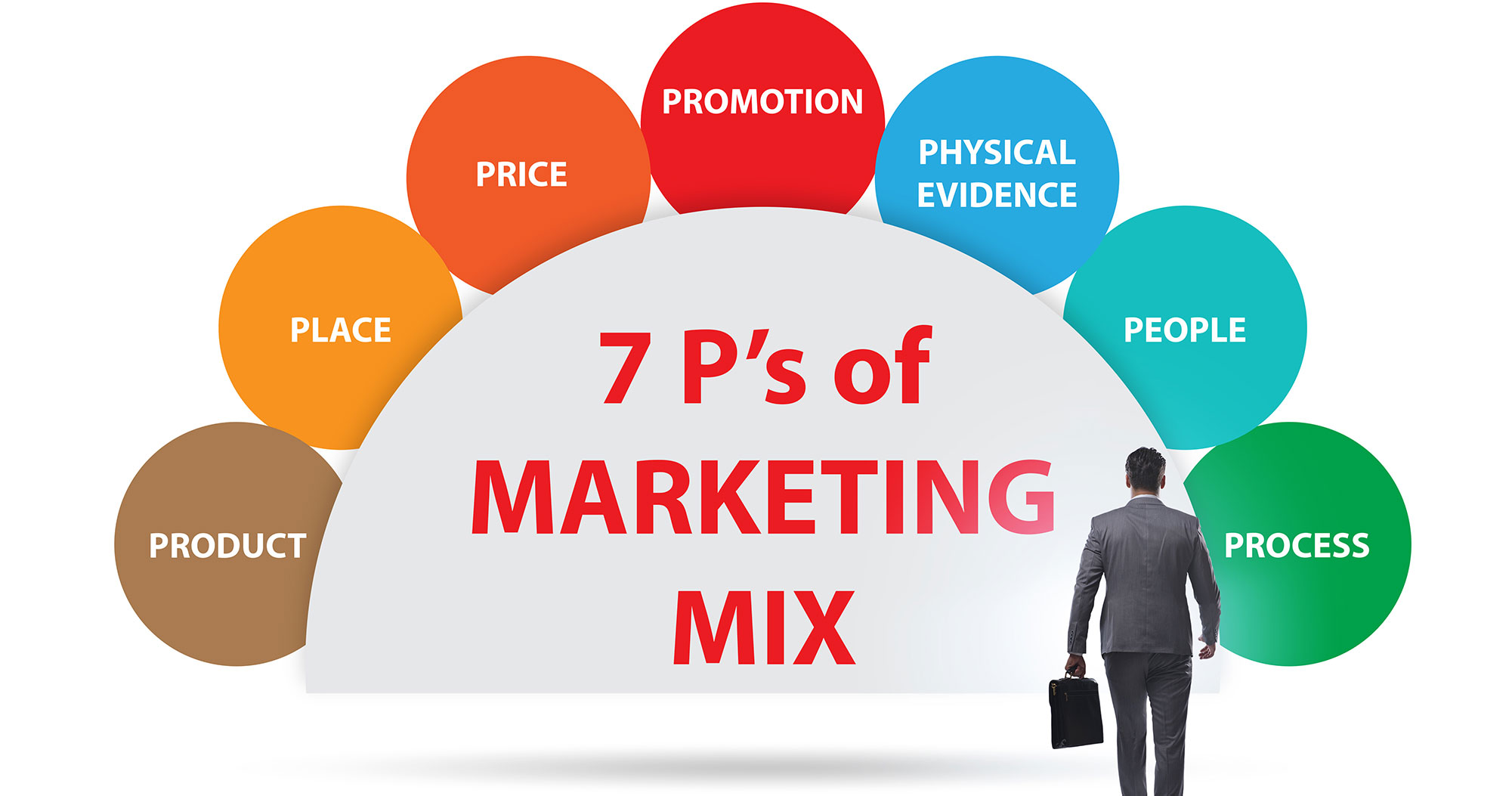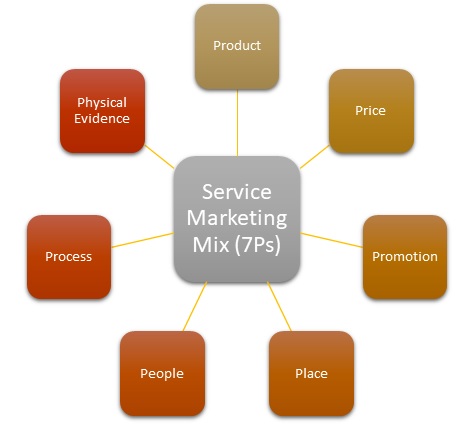7p marketing

If you’re in the field of marketing, you might have come across the term “7P Marketing” and wondered what it entails. Today, we’ll delve into the concept and its significance in the modern business landscape.
What is 7P Marketing and its significance?
7P Marketing is an extended marketing mix that builds upon the traditional 4Ps (Product, Price, Place, and Promotion) to include three additional elements: People, Process, and Physical Evidence.
People: This refers to the personnel who interact with customers and play a crucial role in delivering exceptional customer experiences.
Process: Process refers to the procedures and systems in place for delivering products or services to customers efficiently.
Physical Evidence: This includes tangible elements that reinforce a brand’s value, such as packaging, facilities, or the overall physical presentation of a business.
The significance of 7P Marketing lies in its comprehensive approach to marketing strategy. By considering all seven elements, businesses can gain a competitive edge and create a more holistic customer experience.
The evolution of the traditional 4Ps to 7Ps
The addition of People, Process, and Physical Evidence to the original 4Ps came as a response to the changing dynamics of the marketplace. With a growing emphasis on customer service, customer experience, and the role of intangible factors in purchasing decisions, these three elements were deemed essential for effective marketing.
The 7P Marketing mix recognizes that businesses need to adapt to the evolving demands and expectations of customers. By incorporating these additional elements, companies can better align their marketing strategies with customer needs, enhance brand perception, and drive long-term success.
In summary, 7P Marketing expands on the traditional 4Ps by incorporating People, Process, and Physical Evidence. This comprehensive approach helps businesses deliver exceptional customer experiences and stay competitive in today’s dynamic marketplace.

Product
Product development, positioning, and value proposition are crucial aspects of a successful marketing strategy. Understanding their importance can help businesses effectively promote and sell their products.
Understanding the importance of product development
Effective product development ensures that businesses offer products that meet customer needs, preferences, and solve their problems. By continuously improving and innovating products, businesses can stay ahead of market trends and provide value to their customers.
Product positioning and differentiation strategies
Product positioning involves identifying a unique place for the product in the market, emphasizing its unique features, benefits, or target audience. Differentiation strategies help create a competitive edge by highlighting what sets the product apart from competitors.
Creating a compelling value proposition
A value proposition communicates the unique value that a product offers to customers. It answers the question, “Why should customers choose this product over others?” A compelling value proposition conveys the benefits, solves customers’ problems, and creates a strong reason to buy the product.
In summary, understanding the importance of product development, positioning, and creating a compelling value proposition is vital for businesses to effectively market and sell their products.

Price
Pricing strategies for competitive advantage
When it comes to the 7P marketing mix, price plays a crucial role in gaining a competitive advantage. Businesses can adopt various pricing strategies such as penetration pricing, skimming pricing, or even value-based pricing. Each strategy has its own benefits and considerations, and it’s important to determine the right approach for your specific industry and target market.
Factors to consider when setting prices
Setting the right prices for your products or services involves careful consideration of various factors. These can include costs, competition, customer demand, market conditions, and the perceived value of your offerings. By assessing these factors, you can ensure that your pricing aligns with your business objectives while meeting the expectations of your target customers.
The role of pricing in attracting and retaining customers
Pricing plays a critical role in attracting and retaining customers. A well-thought-out pricing strategy can help position your brand as offering good value for money, leading to customer loyalty and repeat business. Additionally, pricing can be used as a tool to drive customer acquisition by offering competitive prices or discounts. By continuously evaluating and adjusting your pricing strategy, you can optimize revenue while maintaining customer satisfaction.
Remember, pricing is not a one-time decision but an ongoing process that requires monitoring market trends, analyzing customer behavior, and adapting to changing dynamics. It’s important to find the right balance between profitability and competitiveness to ensure the long-term success of your business.

Promotion
Effective promotional channels and techniques
In today’s digital age, there are numerous channels and techniques available to promote your business. Some popular ones include social media marketing, email marketing, content marketing, influencer marketing, and search engine optimization (SEO). By understanding your target audience and their preferences, you can strategically choose the channels and techniques that will have the most impact and reach the right people.
Integrated marketing communication strategy
Having an integrated marketing communication strategy is crucial for a successful promotional campaign. This means that all your marketing efforts, such as advertising, public relations, direct marketing, and sales promotion, should work together in a cohesive and coordinated manner. By ensuring consistent messaging and brand identity across all channels, you can maximize the effectiveness of your promotions.
Measuring the effectiveness of promotional campaigns
Measuring the effectiveness of your promotional campaigns is essential to determine whether your efforts are yielding the desired results. There are various metrics you can track, such as website traffic, conversion rates, social media engagement, click-through rates, and customer feedback. By analyzing these metrics, you can identify what’s working and what needs improvement, allowing you to make data-driven decisions and optimize your promotional strategies for better outcomes.

Place
When it comes to marketing, the “place” element refers to the distribution and accessibility of your product or service. It is crucial to consider various factors to ensure your product reaches the right customers in the right manner.
Choosing the right distribution channels
Finding the appropriate distribution channels is key to reaching your target audience effectively. Whether it’s through direct sales, retail stores, online platforms, or wholesalers, you need to select channels that align with your business goals and customer preferences.
Managing logistics and supply chain
Efficiently managing logistics and the supply chain is essential for seamless delivery of your product or service. This involves streamlining processes, coordinating with suppliers, and optimizing inventory management to ensure timely availability and customer satisfaction.
Location and accessibility considerations
The physical location of your business can greatly impact customer convenience and accessibility. Factors to consider include proximity to target markets, transportation availability, parking facilities, and overall convenience for customers. By strategically choosing the right location, you can enhance brand visibility and attract more potential customers.
These key considerations under the “place” element of marketing play a crucial role in ensuring that your product or service reaches the right customers conveniently and efficiently. By understanding the importance of distribution channels, managing logistics effectively, and considering location and accessibility, you can strengthen your marketing strategy and increase your chances of success.

People
The role of employees in delivering customer satisfaction
In any business, employees play a crucial role in delivering customer satisfaction. They are the frontline representatives of your brand and have the power to make or break the customer experience. By ensuring that your employees are well-trained, knowledgeable, and customer-focused, you can enhance the overall satisfaction of your customers.
Recruitment, training, and motivation of staff
Recruitment, training, and motivation of staff are key factors in building a strong team that can deliver exceptional customer service. Hiring the right people who align with your company values and providing them with proper training and development opportunities will ensure that they have the necessary skills and knowledge to meet customer needs. Additionally, motivating and empowering your employees through recognition, incentives, and a positive work environment will help maintain their enthusiasm and dedication.
Building strong customer relationships through employee engagement
Employee engagement plays a vital role in building strong customer relationships. When employees are engaged and satisfied in their roles, they are more likely to go above and beyond to meet customer expectations. Encouraging open communication, soliciting feedback, and involving employees in decision-making processes can foster a sense of ownership and commitment. By valuing and investing in your employees, you create a culture of excellence that resonates with your customers.

Process
Streamlining and improving customer experience
When it comes to marketing, the 7P framework provides a comprehensive approach to ensure a positive customer experience. By focusing on elements like product, price, place, and promotion, businesses can streamline their processes, tailor their offerings to customer needs, and deliver exceptional service.
Efficient service delivery and operations
Efficiency is essential for any business, and the 7P marketing framework helps achieve it. By optimizing processes related to people, physical evidence, and process, companies can ensure smooth service delivery and efficient operations. This, in turn, leads to increased customer satisfaction and loyalty.
In summary, the 7P marketing framework offers a structured approach for businesses to enhance the customer experience and improve their operations. By considering all seven elements, companies can effectively meet customer needs, differentiate themselves from competitors, and ultimately drive success.
The 7Ps of marketing are a framework that businesses can use to develop and implement their marketing strategies. The 7Ps are:
- Product: The product or service that the business is offering.
- Price: The price that the business is charging for its product or service.
- Place: The channels through which the business makes its product or service available to customers.
- Promotion: The methods that the business uses to communicate with potential and existing customers about its product or service.
- People: The employees and other individuals who interact with customers on behalf of the business.
- Processes: The internal processes that the business uses to deliver its product or service to customers.
- Physical evidence: The tangible elements of the business’s offering, such as its physical location, website, and branding.
The 7Ps of marketing can be used to develop a holistic approach to marketing that takes into account all of the factors that influence customer decision-making. By carefully considering each of the 7Ps, businesses can develop marketing strategies that are more likely to be successful.
Here are some examples of how businesses can use the 7Ps of marketing:
- Product: A restaurant might use the 7Ps of marketing to develop a new menu item, such as a new type of burger. The restaurant would consider the product’s features, benefits, and price, as well as how it would be marketed and distributed.
- Price: A clothing retailer might use the 7Ps of marketing to decide on the price of a new line of jeans. The retailer would consider the cost of manufacturing the jeans, the competition, and the target customer’s budget.
- Place: A software company might use the 7Ps of marketing to decide how to distribute its new software product. The company would consider online distribution channels, such as its own website and app stores, as well as offline distribution channels, such as physical retailers.
- Promotion: A travel agency might use the 7Ps of marketing to develop a new marketing campaign for a vacation package to Mexico. The agency would consider the target audience, the message of the campaign, and the media channels that would be used to reach the target audience.
- People: A hotel might use the 7Ps of marketing to train its staff on how to provide excellent customer service. The hotel would consider the staff’s role in delivering the hotel’s overall customer experience.
- Processes: A bank might use the 7Ps of marketing to improve its loan application process. The bank would consider the steps involved in the process, the time it takes to complete the process, and the customer experience.
- Physical evidence: A car dealership might use the 7Ps of marketing to create a welcoming and inviting showroom. The dealership would consider the layout of the showroom, the lighting, and the furniture.
By carefully considering each of the 7Ps of marketing, businesses can develop strategies that are more likely to be successful in meeting the needs of their target customers.
